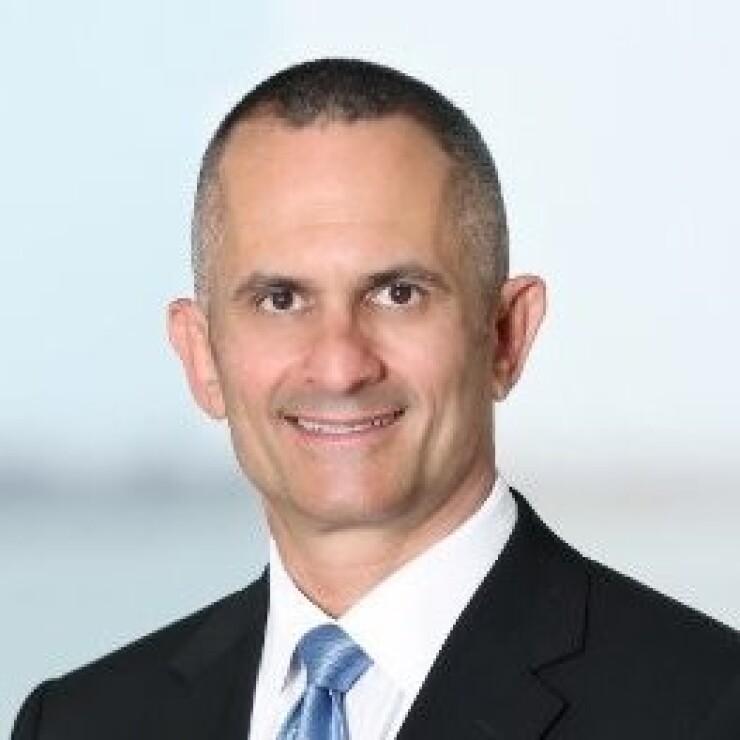Digital Insurance contacted insurance professionals to discuss what's ahead for the insurance industry in 2025.
Responses have been lightly edited for clarity.
Darcy Rittinger, Chief Risk Officer, Cover Genius

Currently, regulators are tightening oversight on how financial products like insurance are marketed and sold, with a focus on protecting consumers from misleading information, ensuring access to necessary coverage, and ensuring that the products consumers are buying provide the promised value and benefits as advertised.
Insurance and insurtechs companies should be proactive about addressing this new regulatory environment and use it as an opportunity to go above and beyond and offer enhanced security, fairness, and transparency to customers. They can do so with clear communication, brand differentiation and customer-centric products.
Tom Rasmussen, VP of product, claims at Carpe Data

In 2025, carriers will take more proactive measures to combat the growing issue of fraud as they realize the scale of its influence. Fraud is currently the single greatest loss impacting carriers today – equivalent to 10 Hurricane Helene-sized disasters occurring every year. These losses are often exacerbated by attorneys who prioritize maximizing settlements for their own benefit rather than acting in the claimant's best interest. In the coming year, we'll see carriers leverage proactive tools that automate the review of open injury claims compiling real-time, evidence-based data to inform their decision-making.
By proactively identifying and mitigating fraudulent claims insurers can crack down on fraud and attorney-driven inflation, lower costs and ultimately reduce premiums for policyholders.
We'll see increased collaboration as carriers unite in the growing fight against fraud. By sharing critical intelligence, patterns and data, insurers can more effectively identify and disrupt organized fraudulent activity that has exploited gaps in an individual carrier's defense. Rather than monetizing this data exchange, the "network effect" will focus on fostering long-term relationships that drive mutually beneficial results for all parties.
Tim Owen, VP, product management, Vertafore

Carriers are likely to increase their investment in a streamlined onboarding and licensing process for both independent and captive sales forces.
Agents have been working through a challenging market.
If they encounter unnecessary hurdles, their enthusiasm wanes, and they may move on to another carrier.
Simplifying the agent experience will continue to be crucial for carriers to foster productive partnerships.
Matheus Riolfi, CEO at Tint

2025 will mark the tipping point where insurance products tailored to buyers' needs will become the dominant model for mobility coverage. Traditional policies will give way to dynamic coverage that adapts in real-time based on how vehicles are used - whether for personal transport, rideshare, delivery, or cargo. This shift will be made possible by connections between platforms and insurtechs that can then offer the appropriate insurance product in a native way to the platform users.
While the industry has innovated with autonomous vehicles and futuristic technology, 2025 will prove that the real revolution in mobility insurance is far more practical: making insurance simple to buy and use. The winning insurers will be those that master basic but critical improvements - like enabling owners to insure 100 vehicles in 30 seconds instead of hours or providing seamless coverage transitions for rideshare drivers without coverage gaps or penalties.
The growing segment of small fleet operators will emerge as the catalyst for insurance innovation in 2025. These operators, who typically manage 5-20 vehicles, will push the industry to develop more flexible coverage models that can scale up and down based on actual usage patterns. This will lead to the rise of dynamic insurance products that automatically adjust coverage levels and pricing based on real-time operational data.
Cargo insurance will move beyond basic shipment tracking to embrace load-level data as the new standard for risk assessment. This approach will enable insurers to understand and price risk in real time based on key load-level data points. As cargo theft and fraud continue to challenge the industry, this deeper level of visibility will not only improve risk pricing but also enable proactive risk mitigation. Insurance products will shift from revenue based models to dynamic coverage that adapts to each shipment's unique risk profile.
2025 will mark the year when property management software platforms become the primary channel for short-term rental insurance distribution. Rather than building insurance capabilities in-house, these platforms will forge strategic partnerships with InsurTech providers to embed specialized coverage directly into their platforms, establishing themselves as the primary touchpoint for insurance purchases. This shift will bridge the gap between traditional homeowner policies and the unique needs of the short-term rental market, creating a seamless insurance experience for property managers handling multiple properties.
Mark Holweger, CEO of Legal & General America:

In 2025, life insurance carriers will need to be digitally nimble to meet the next iteration of distribution partners where they are to continue reducing roadblocks in the application and underwriting process.
This may include the use of AI and machine learning strategically to shorten application time and process and offer more instant decisions to start, but the sky's the limit.
David Embry, CEO, Mylo

It's unfortunate the hard market has lasted as long as it has, and I'm disappointed that circumstances aren't better for customers in terms of more affordable pricing. I don't see this changing in 2025. I do however believe as an industry we can do a much better job of communicating the value of the right coverage and the downsides of simply choosing insurance based on the cheapest price.
In terms of AI, machine learning and the IoT. We're making progress as an industry, although slower than it could be. The process of change is more costly and time-consuming than you'd expect, but the industry is adopting new technologies. Just remember it's not a revolution, it's an evolution.
Online binding continues to be a challenge for agencies. While more carriers are willing to embed their product offerings with partners, most still prefer customers to end up on their website for purchasing. We need to make carriers aware of the benefits we can offer by processing a high volume of accounts at scale. Through APIs that allow bindable quoting, we can provide better portfolios for carriers and better outcomes for end users.
I see distribution as the biggest challenge for the industry. The cost to acquire and retain customers is becoming increasingly high. Honing in on profitable distribution strategies will be the difference between the winners and losers.
Fred Fein, partner at Clyde and Co, Miami

In the coming year, we'll be carefully watching for a potential shift in social inflation. The US presidential election results perhaps reflected a more conservative national mindset that could reshape many aspects of social inflation, particularly through jury perspectives.
In recent years, jury pools have become desensitized and grown accustomed to nuclear verdicts, where large nine-figure and billion-dollar awards have become the new norm. However, the emerging conservative approach, focusing on reducing spending and waste, may temper these hefty verdicts, leading to more restrained and realistic award amounts.
On the administrative front, we should anticipate the proposal of new state and federal legislation that will likely make pursuing personal injury claims more challenging and promote basic tort reform, directly affecting social inflation. For example, currently, states vary widely in their policies on the discoverability and admissibility of litigation financing agreements, creating a patchwork of regulations. This landscape may become more uniform as new laws are introduced.
Furthermore, the insurance industry is already showing signs of adopting a tougher stance on litigation. Insurers are increasingly refusing to succumb to outrageous demands and are more willing to go to trial, showing less concern about the risks of bad faith accusations and outsized nuclear verdicts. It will be interesting to see how these trends evolve under the influence of the new administration and the shift in public sentiment towards conservatism.
Nanci Schanerman, senior counsel Clyde and Co, Miami

In 2025, the landscape of claims and lawsuits related to autonomous vehicle (AV) incidents is likely to evolve with the increasing presence of AVs on the roads. Level 3 AVs, which require human oversight, have been commonly observed and we are already seeing bodily injury lawsuits across the country. These are related to product liability, negligence, breach of warranty and other causes of actions against the manufacturers and the "drivers" of these vehicles. There is an expected shift towards more Level 4 AVs, where no human driver is needed in the vehicle within situationally controlled areas. This shift underscores the importance of monitoring the types of AV technology in use as it directly influences the nature and frequency of incidents.
Currently, the regulatory approach to AVs is managed through a state-by-state approval system, which has been widely criticized for its complexity and inconsistency. However, the potential introduction of a unified federal framework by the incoming administration could significantly alter this landscape. This prospective federal legislation is anticipated to streamline the regulatory process and fast-track the deployment of AVs across the nation.
A critical component of the federal framework will be defining how accountability is assigned following an AV incident. It is crucial to determine whether accountability will be shared among various parties such as insurers, AV manufacturers, and software developers. Clarifying this aspect of the law will be essential for managing liability and ensuring that all parties involved adhere to their responsibilities.
Another significant element is whether the framework will standardize the testing of AVs, especially Level 5 AVs which are fully autonomous and do not require human intervention in any driving scenario.
Currently, the allowance for testing these vehicles varies by state, creating a patchwork of regulations that can hinder the advancement and integration of this technology. A unified approach could facilitate consistent testing protocols and safety standards nationwide, accelerating the development and public acceptance of Level 5 AVs.
Overall, these considerations will be crucial in shaping the future of autonomous vehicle technology and its integration into public roadways. The potential for increased claims and lawsuits, particularly product liability cases stemming from AV failures, highlights the need for robust and clear regulatory frameworks to manage these emerging challenges effectively.
David Ktshozyan, senior counsel Clyde and Co, Los Angeles

By 2025, climate litigation is likely to intensify on multiple fronts, influenced by evolving legal frameworks and shifting societal expectations. Globally, international climate agreements like the Paris Climate Accord will push for more accountability. Major lawsuits may emerge targeting countries or multinational corporations failing to meet emissions reduction targets, as seen in recent cases such as the Urgenda case in the Netherlands or the ongoing complaints against fossil fuel companies for contributing to climate change.
Nationally, countries may adopt more ambitious environmental laws, leading to an increase in lawsuits aimed at enforcing those laws. In the US, lawsuits like the one against the government for inaction on climate change or against companies for misleading the public will likely grow, especially in regions where climate policy is more aggressive. Litigation in the U.S. will expand as states like California continue to push for stronger regulations on emissions, while other states may resist. This divergence will result in a patchwork of legal landscapes and a rise in both state-level actions and federal regulatory challenges.
Greenwashing claims may also become more prevalent. This will likely be fueled by a more informed public and greater scrutiny of corporate environmental claims. Directors and officers may face increased scrutiny and potentially be held liable for making misleading environmental claims to investors, consumers, or regulators. False claims may expose organizations to lawsuits from shareholders, consumers, and regulatory bodies.
Regarding anti-ESG sentiment, companies should be cautious but persistent in their climate initiatives. Even in an environment of political pushback, credible climate action, backed by solid reporting and third-party audits, will be essential for long-term corporate reputation and risk management.
Finally, the potential return of a climate-skeptic administration under President Trump could derail federal climate policies. But it might spur more localized legal actions from states, cities, and activist groups, further driving the demand for climate-related lawsuits.
Don Okolie, global insurance practice leader for underwriting at Genpact

2025 heralds a combination of macro-economic trends, which will influence underwriting behaviors and appetite. From global conflicts, the increasing shift (and cost) of electrification to replace fossil fuels and stagnation in the world's second largest economy to the unified efforts of western economies to orchestrate base rate reductions, all underpinned by an increasing market share in cyber exposure, their trickle-down effects will impact insurers in 2025.
To navigate these changes comprehensively, we will see insurers progressively shift emphasis to leveraging, augmenting and repurposing data, as a critical transformation and competitive lever. The advent of AI, specifically generative AI, will continue to dismantle historical barriers to data optimization.
Carriers that make the most inroads will be those that successfully adopt hybrid models, namely the integration of analytics and automation solutions into new and legacy systems, to expedite complex practices and build stronger ties between portfolio oversight and transactional, piecemeal underwriting.
Technology interventions such as underwriting workbench solutions will see a shift in emphasis from process automation (to support efficiency goals) to advanced analytics platforms with AI capabilities (to support underwriting effectiveness goals).
Chaz Perera, CEO of Roots Automation

This coming year, pricing will no longer be a competitive advantage for insurance businesses. They will need to increase margins while keeping costs down. To achieve this, they will focus on bolstering productivity while offering customization for better client service across their claims and underwriting departments.
2025 will see companies intensify efforts to close the skills gap. Initiatives will leverage AI and digital tools to provide adaptive training and operational resources tailored to modern needs. Successful players will combine these technologies with flexible work arrangements to align with shifting employee expectations. This dual approach will drive competitiveness by balancing workforce transformation with effective talent retention strategies.
AI will disrupt the traditional insurance outsourcing model by automating routine tasks that were typically offshored, cutting outsourcing jobs in half in the next three years. Intelligent workflow agents will dramatically change work design. Dynamically distributing work based on real-time capacity and expertise, and managing end-to-end process orchestration and execution, they will drive further reduction in outsourcing. Document processing, data entry, and basic customer service - traditionally handled by BPO providers - will be managed by AI systems, shifting outsourcing focus to specialized services like AI model training and complex technical support. We see this new BPO work being done in the U.S., not offshore locations.






